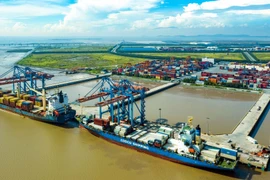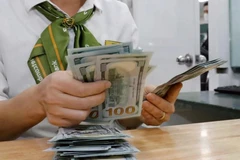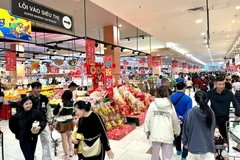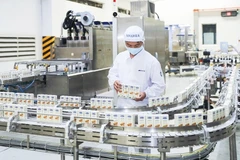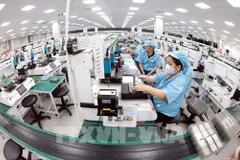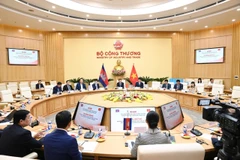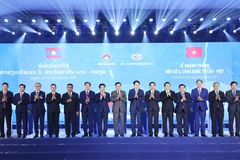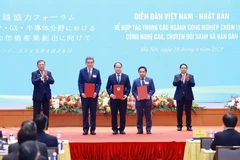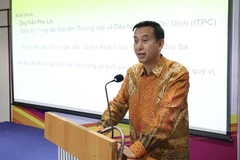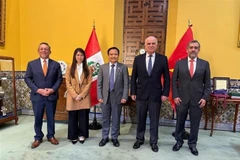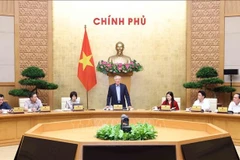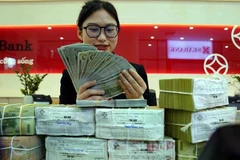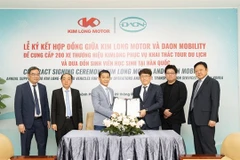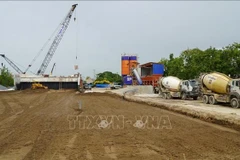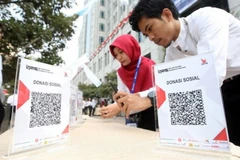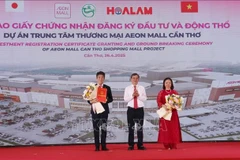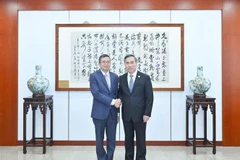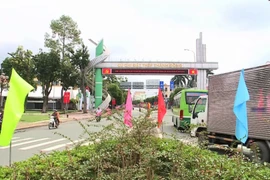Hanoi, (VNA) - International and economic integration has opened up great opportunities for Vietnam’s imports and exports.
In particular, the signing of a series of new-generation FTAs such as the CPTPP, the Vietnam-EU FTA, and the RCEP is expected to significantly impact the Vietnamese economy by helping expand import-export markets and open up new potential markets.
FTAs – a boost for exports
The Ministry of Industry and Trade (MoIT) said exports can be considered one of the most impressive achievements of the Vietnamese economy. In the ten years of implementing the strategy on import-export from 2011-2020, total foreign trade increased 2.7 times, from 203.6 billion USD in 2011 to 545.3 billion USD in 2020.
In 2021, despite the severe impact of the COVID-19 pandemic, the import-export value reached a record 668.5 billion USD. In the first seven months of 2022, the value amounted to 431.94 billion USD, with export revenue surging 16.1% year on year to 216.35 billion USD and import revenue rising 13.6% to 215.59 billion USD.
The significant outcome is partly attributable to Vietnam’s participation in FTAs. Statistics of the Ministry of Industry and Trade show that revenue from exports benefiting from tax incentives under free trade agreements (FTAs) topped 69 billion USD in 2021, accounting for 32.66% of total export revenue in markets that are members of those FTAs.
In January-July this year, high growth was seen in exports to FTA partners. Le Hoang Tai, deputy director of the Trade Promotion Department under the MoIT, cited statistics that showed exports to three CPTPP members, Peru, Mexico and Canada, rocketed by 84.4%, 44.5% and 20.8%, respectively.
Meanwhile, Vietnam’s exports to the EU went up 21.1% to 27.67 billion USD, to ASEAN - by 25.8% to 20.38 billion USD, to the Republic of Korea – by 14.5% to 13.9 billion USD, and Japan – by 12.2% to 13.3 billion USD.
It could be said that many enterprises have made good use of the existing FTAs to expand their markets. An example is the leather-footwear industry.
According to Phan Thi Thanh Xuan, Vice President and Secretary General of the Vietnam Leather, Footwear and Handbag Association (Lefaso), the leather and footwear industry earned 14 billion USD from exports in the first seven months of this year, a 13% increase year on year. In addition, good growth was recorded in FTA member markets, with a 10% rise in sales to CPTPP markets and an 18% increase in shipments to the EU.
“By far, the industry has been able to optimise the advantages created by FTAs, which helped it to overcome challenges posed by the COVID-19 pandemic,” Xuan said.
Quick to seize opportunities
Such optimistic outcomes show that export has become an important driver for Vietnam’s economy. Moreover, the new-generation FTAs have opened up opportunities for Vietnam and let it enter a new playground with greater cooperation possibilities and fewer tariff obstacles.
However, to optimise the advantages of FTAs, enterprises must tackle challenges in rules of origin and regulations on food hygiene and safety and environmental protection.
Economist Le Quoc Phuong said enterprises must meet the high standards of export markets to join their playground and benefit from tariff reduction.
According to Xuan, the leather-footwear industry has raised local product contents to 55% and is working to increase the rate to 70-80 %.
However, the industry is facing difficulties in producing materials and auxiliary materials, Xuan said, citing the example of leather. Vietnam has to import billions of USD worth of leather each year, as local products do not meet strict environmental regulations.
The Lefaso official proposed that relevant agencies pay attention to developing a sustainable supply of materials, thus not only ensuring stability for the industry but also increasing its capacity to join global supply chains.
Xuan also voiced her hope that the development strategy of the leather-footwear industry would be quickly approved, laying the foundation for enterprises in the industry to build their production and business plans.
The deputy director of the Trade Promotion Department advised enterprises to invest more in controlling product quality, raising staff’s skills in foreign language, negotiation and trade promotion to keep up-to-date with global consumer trends and better perform trade promotion work./.



